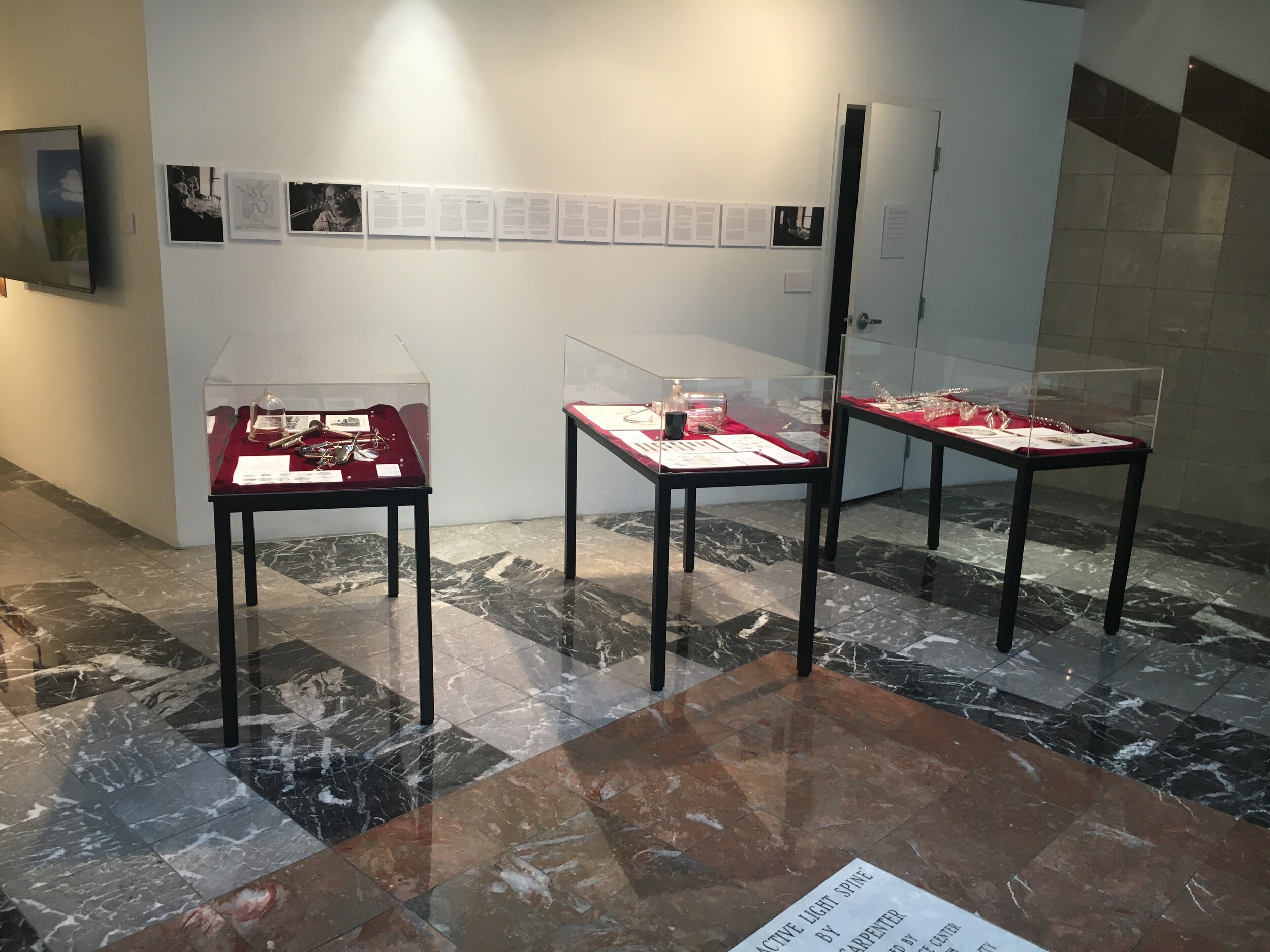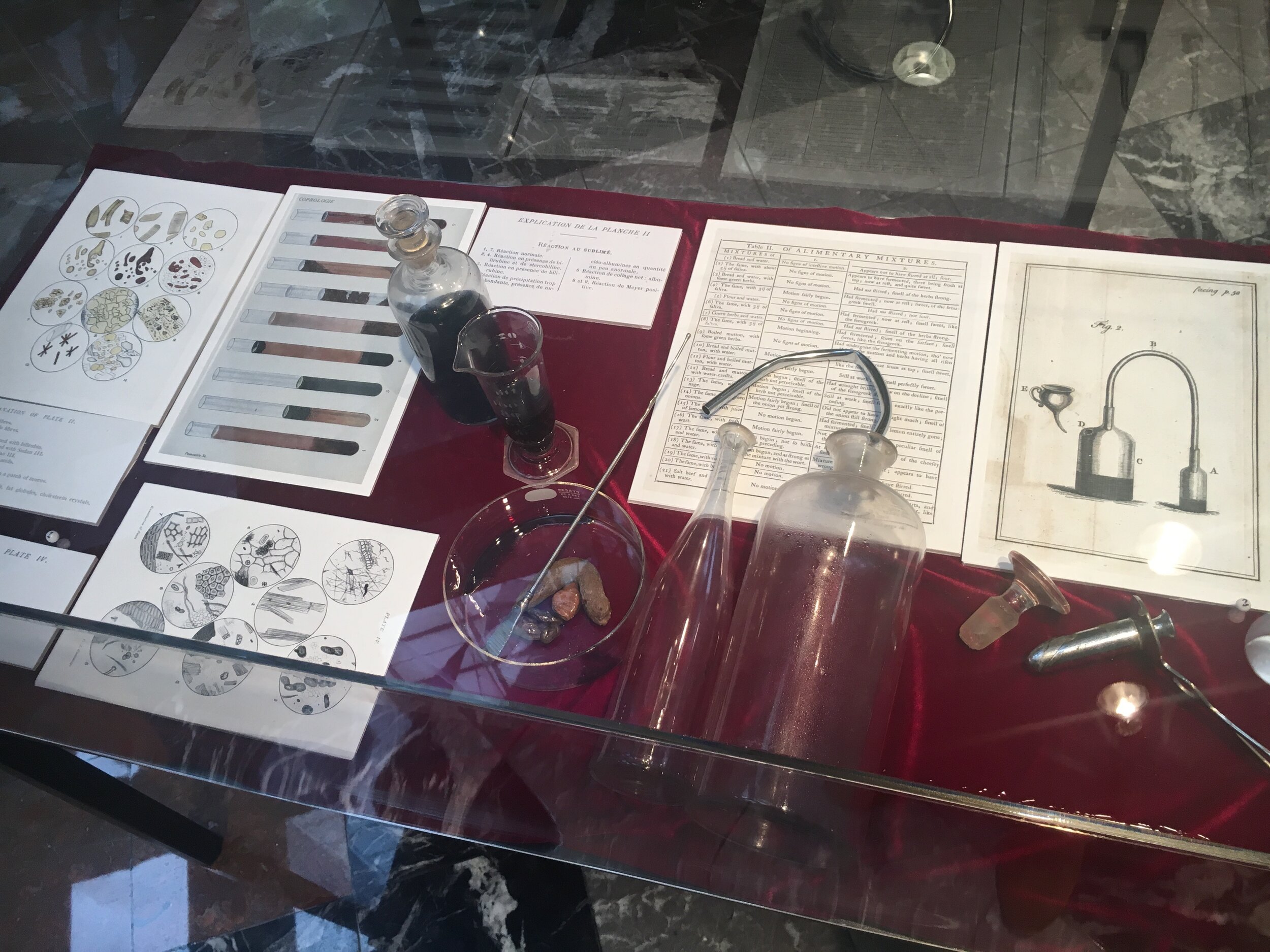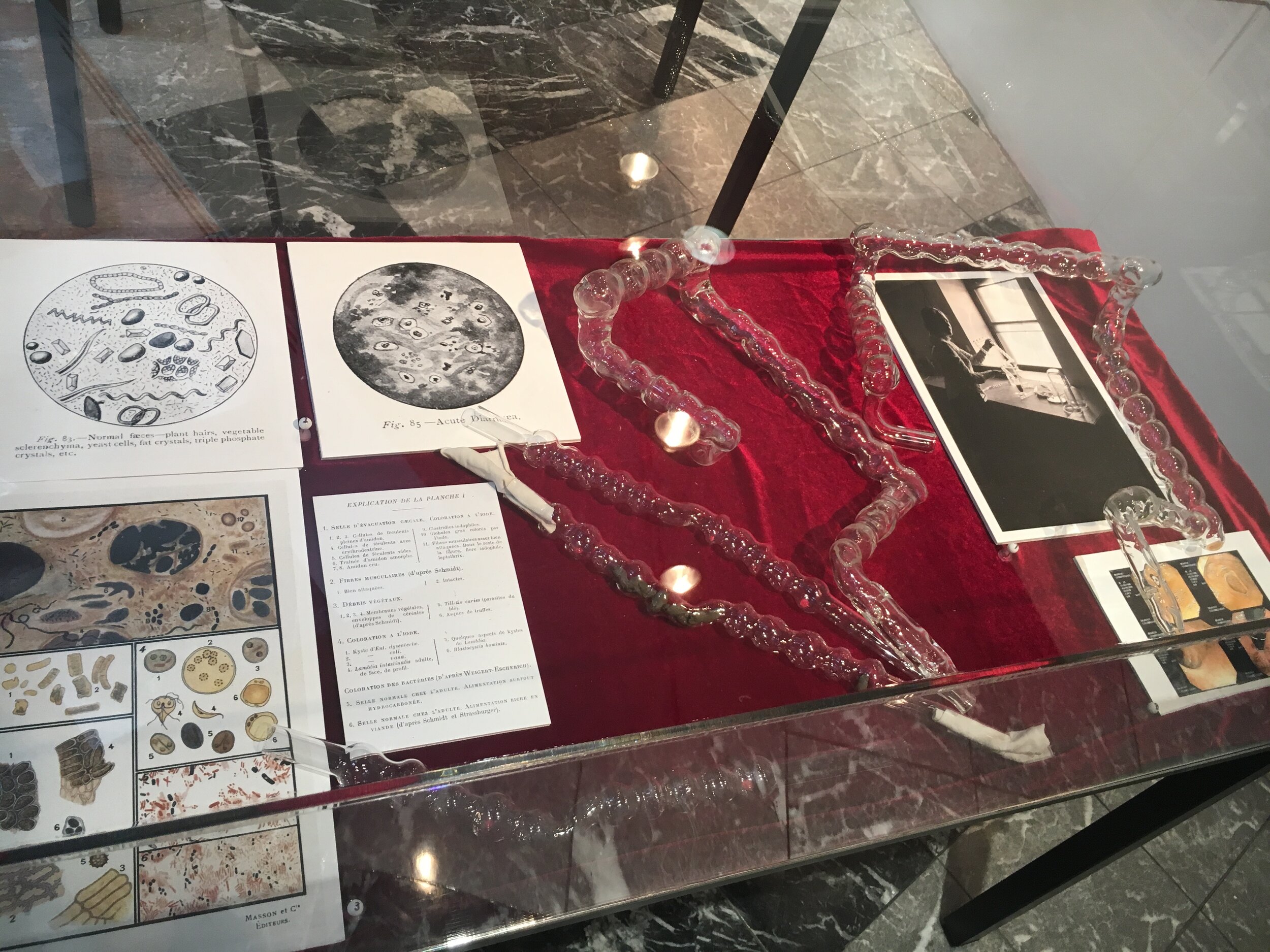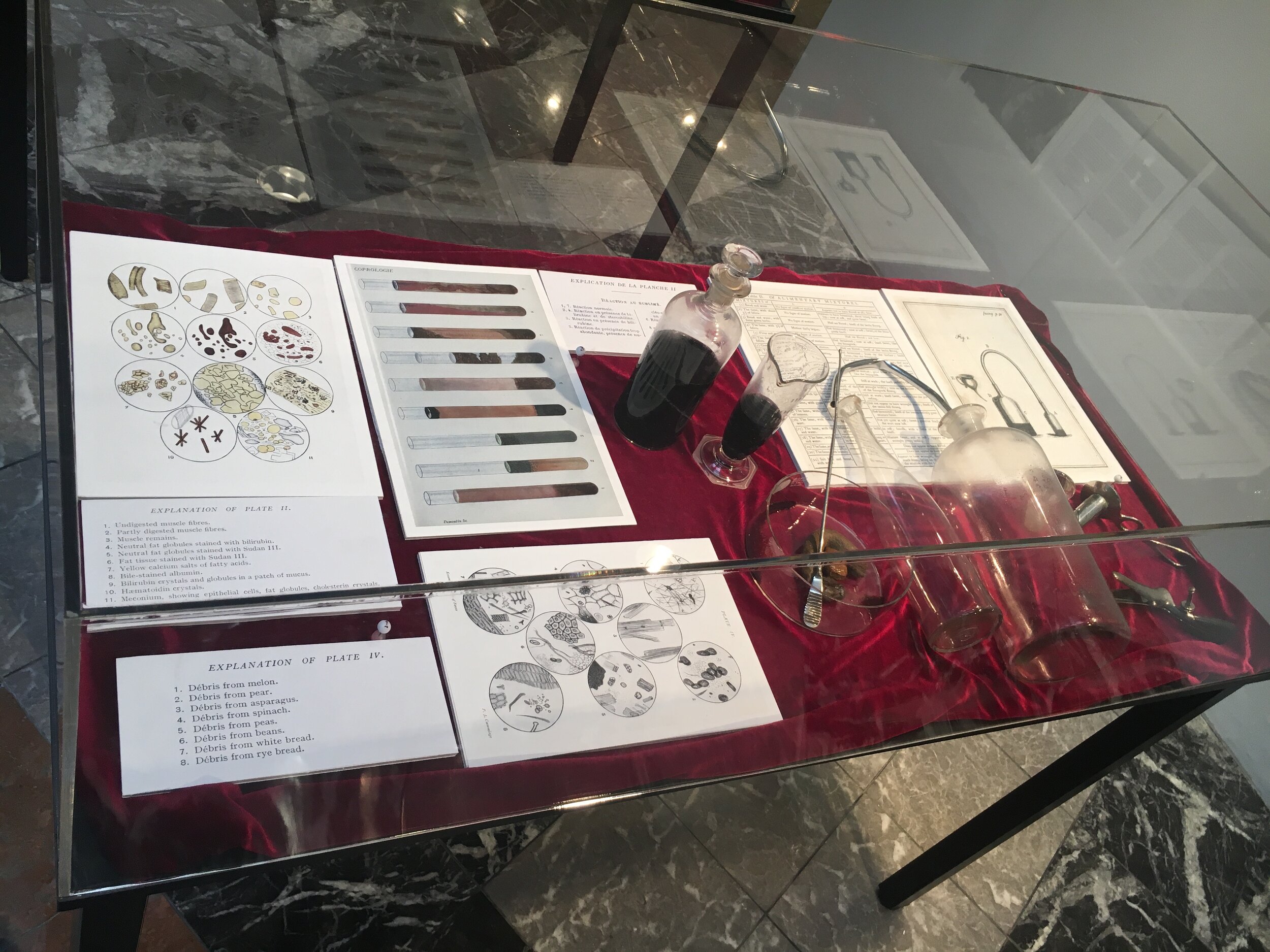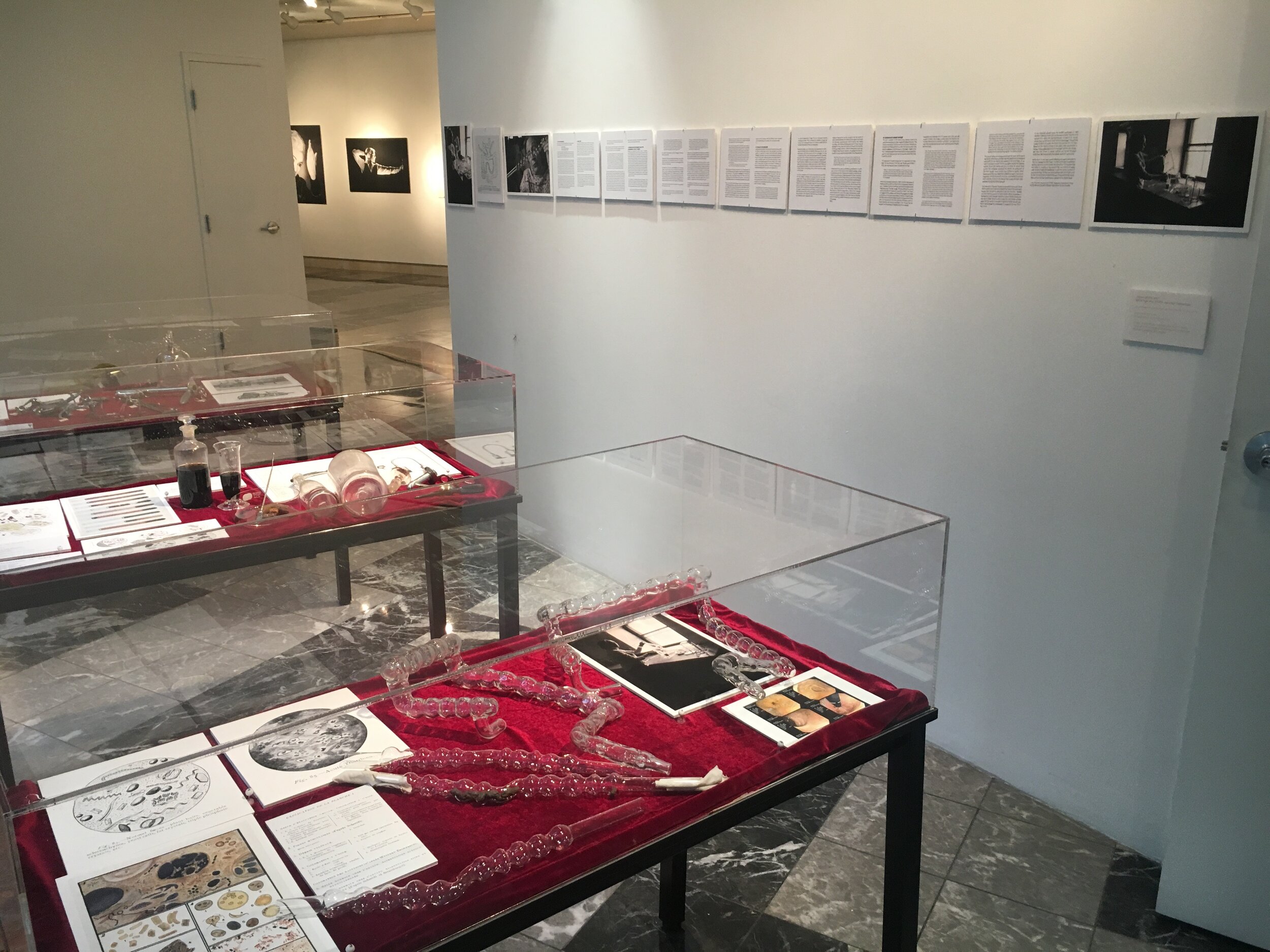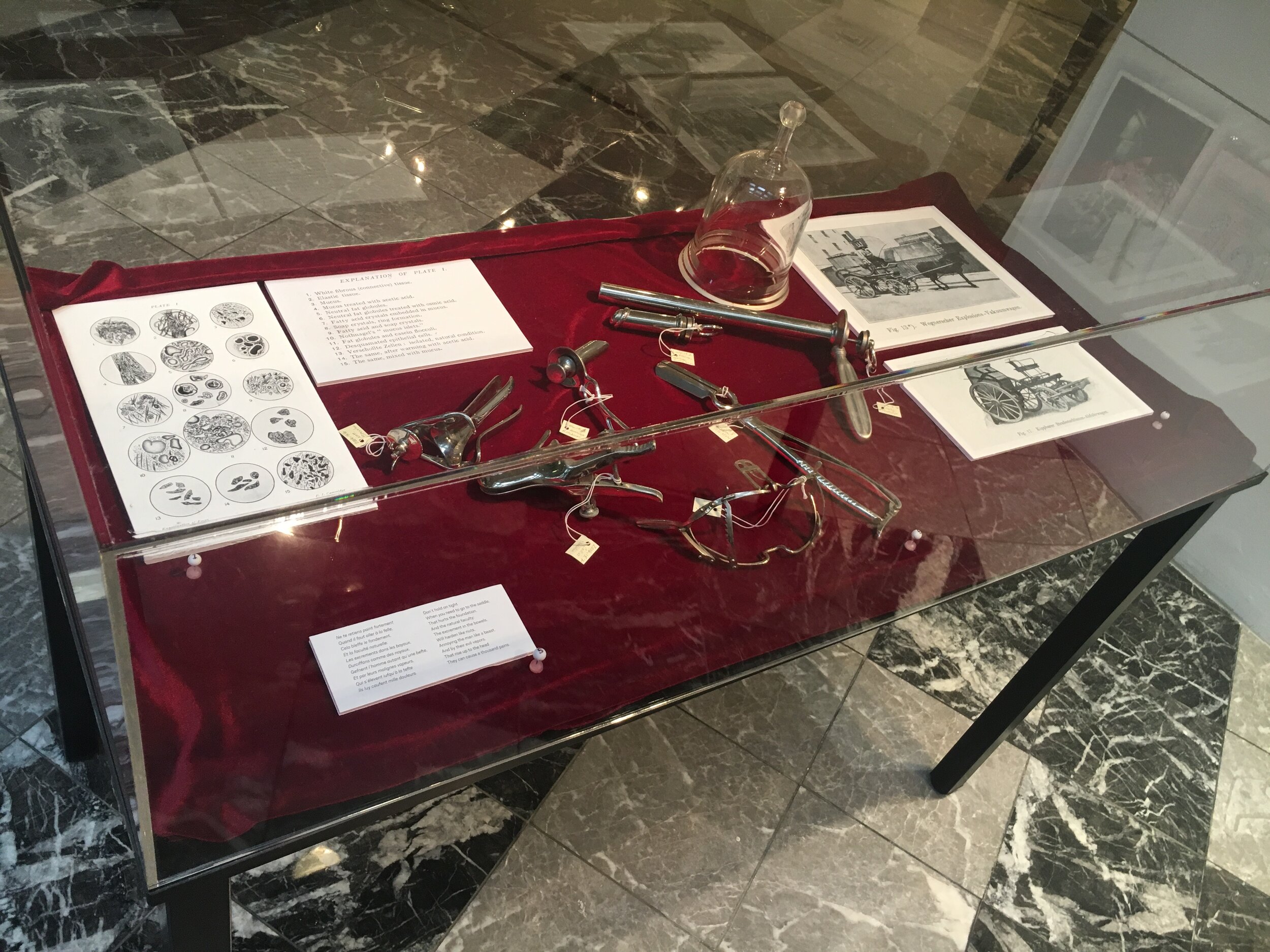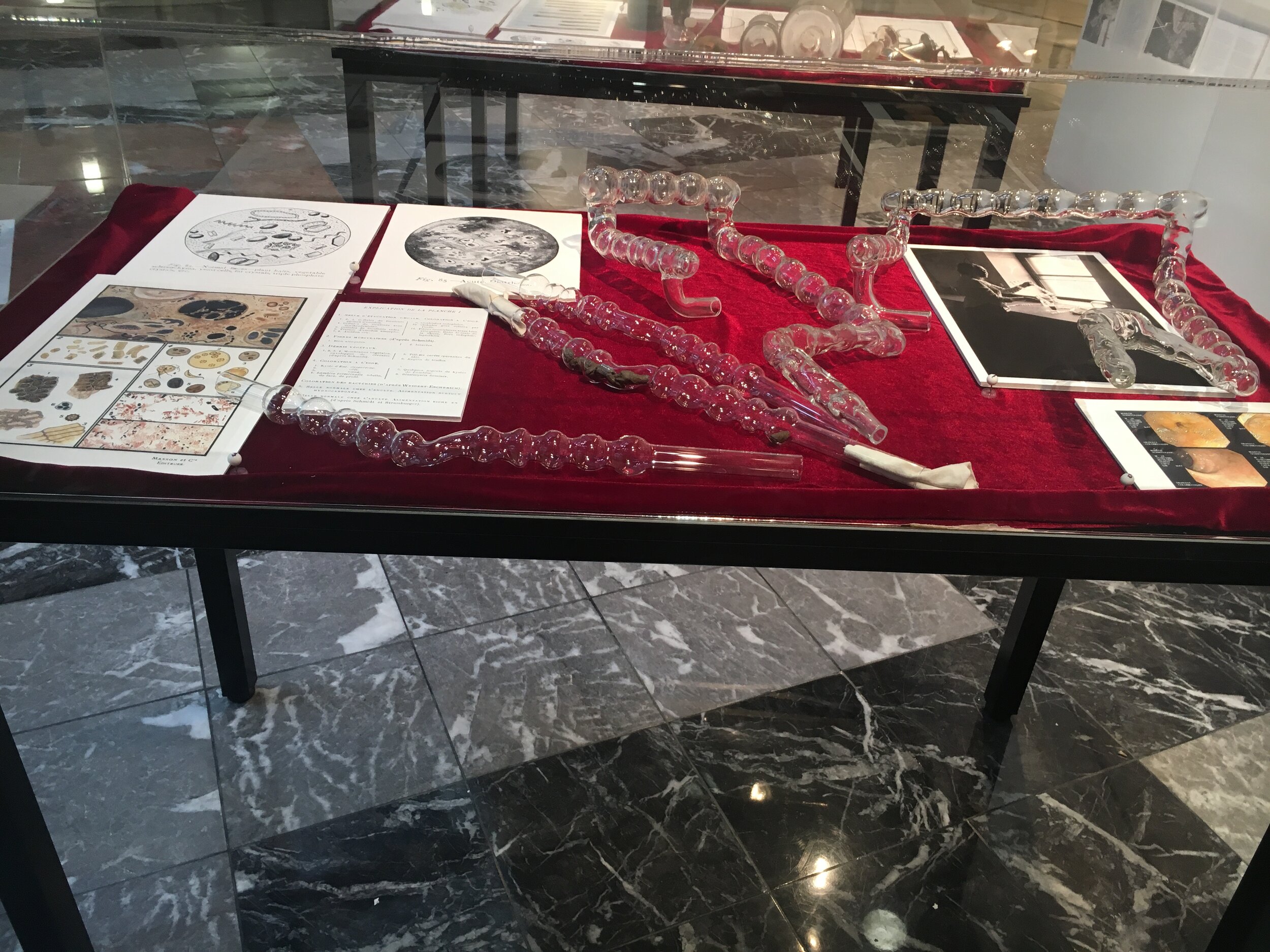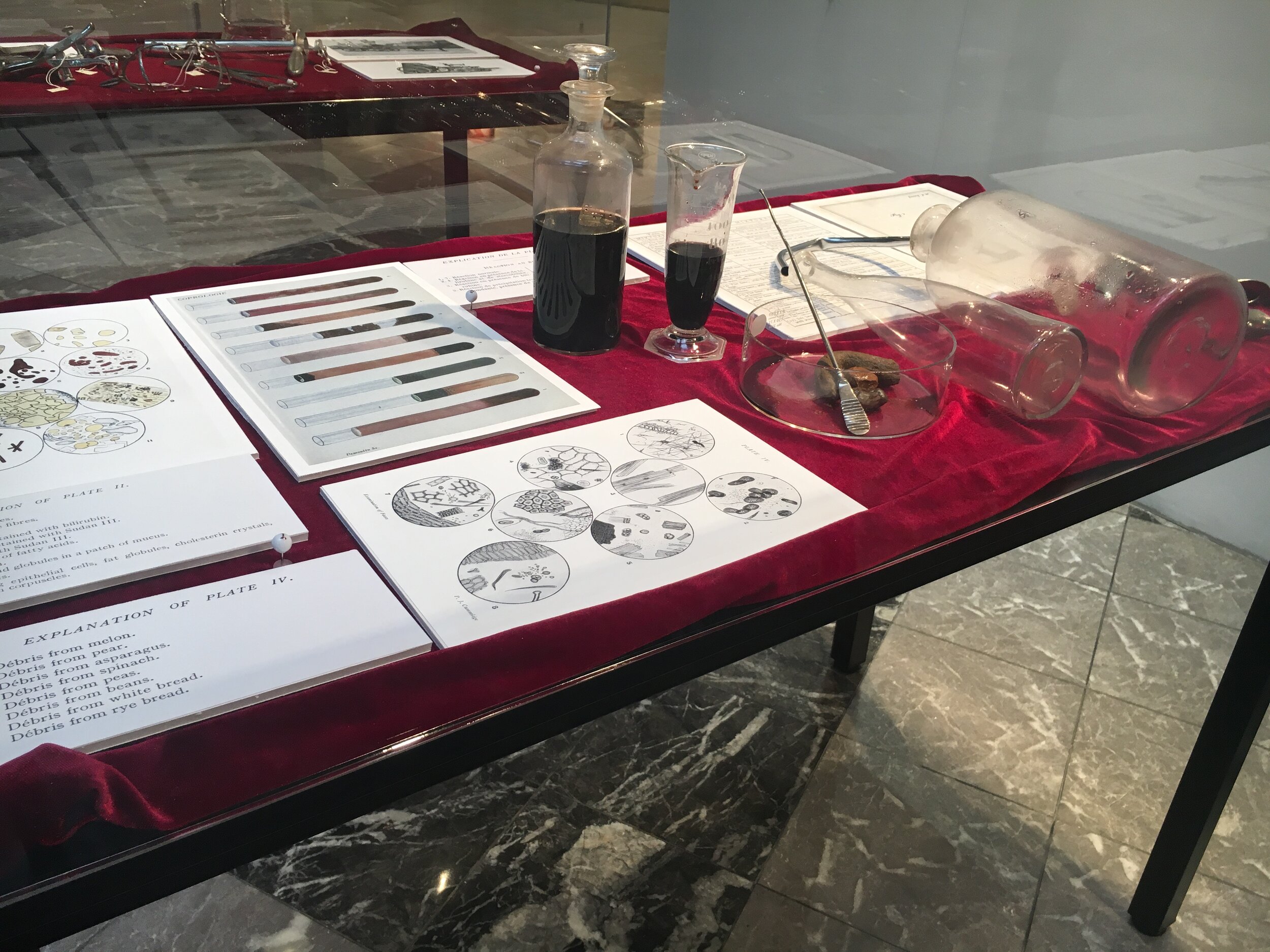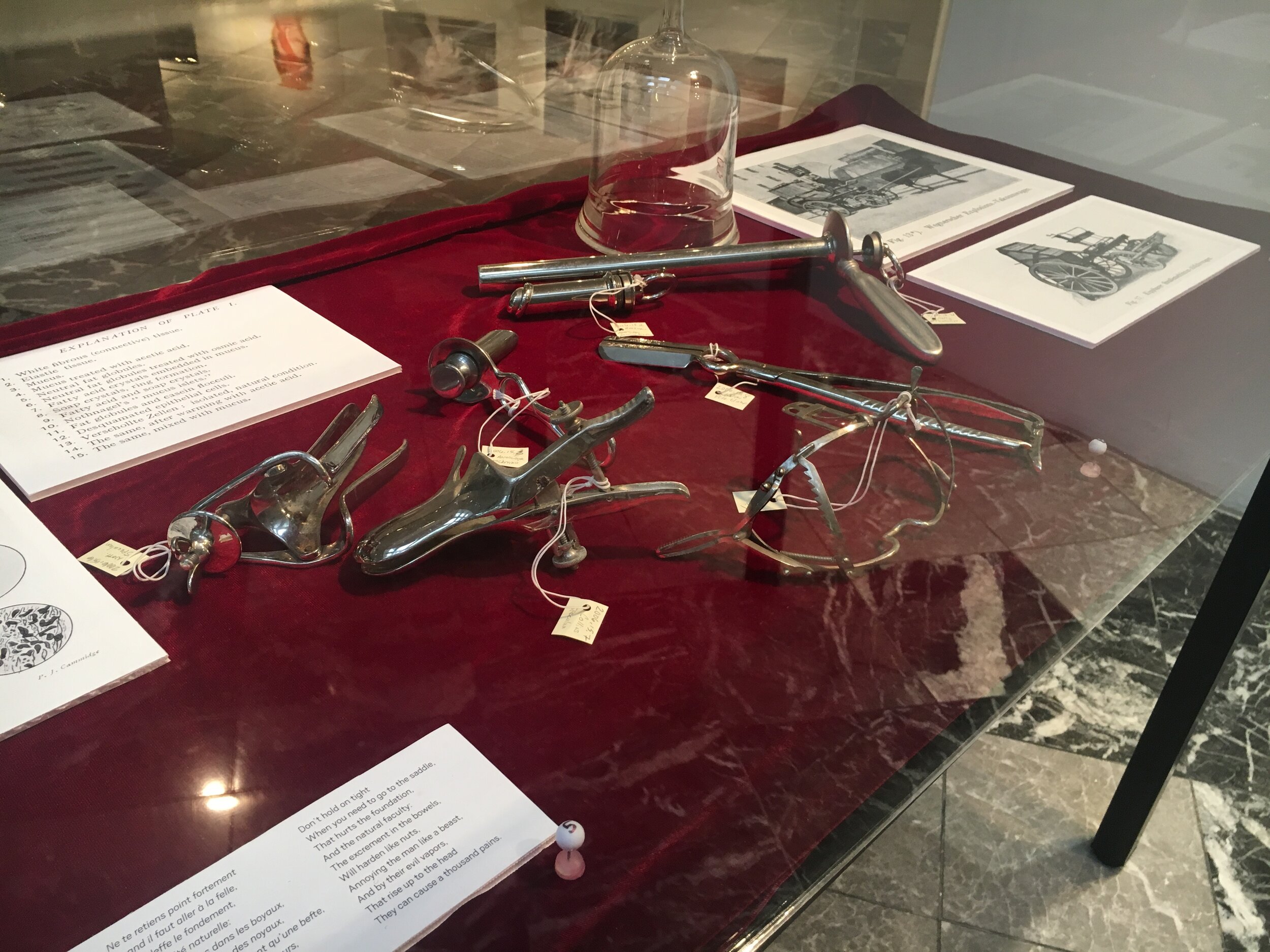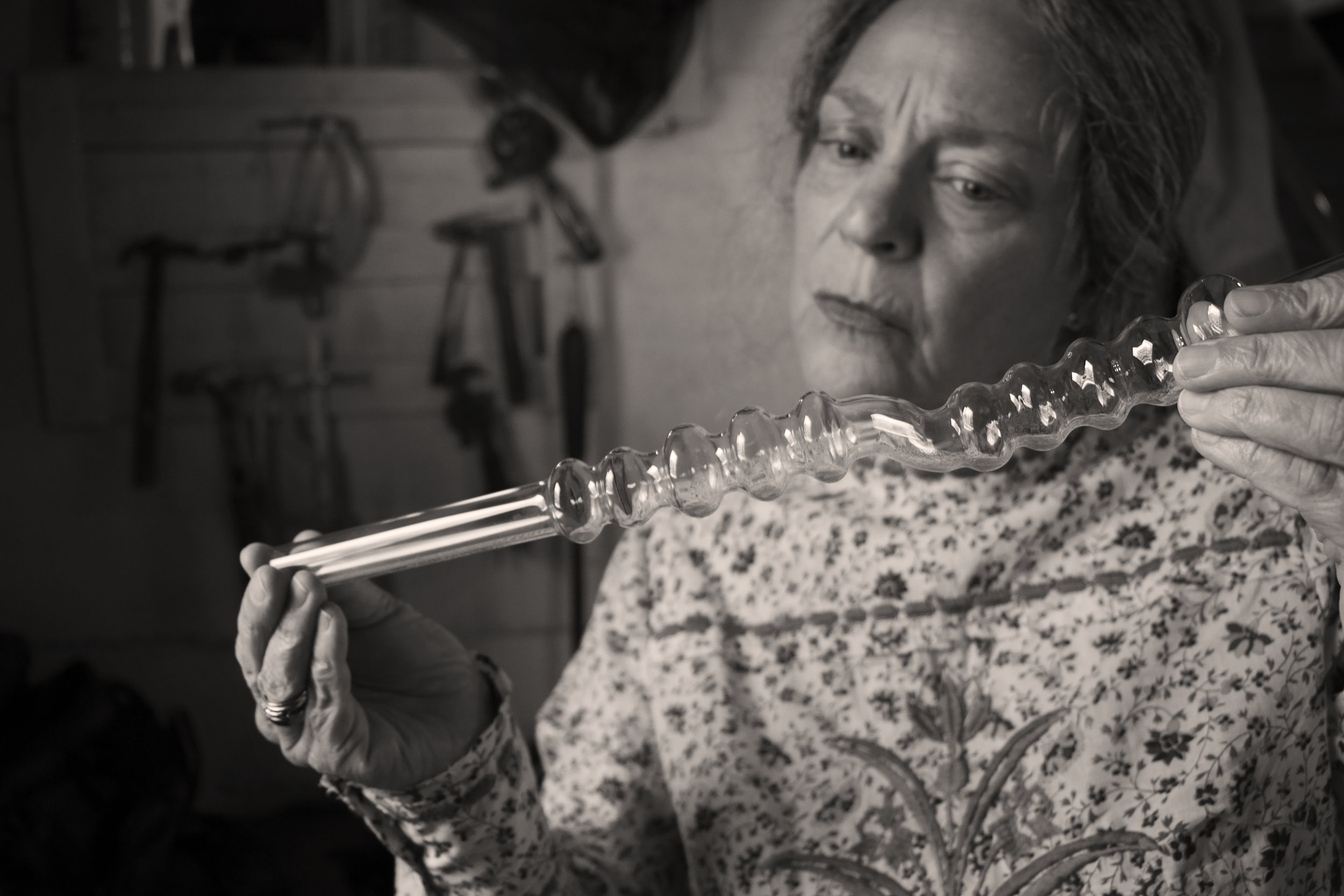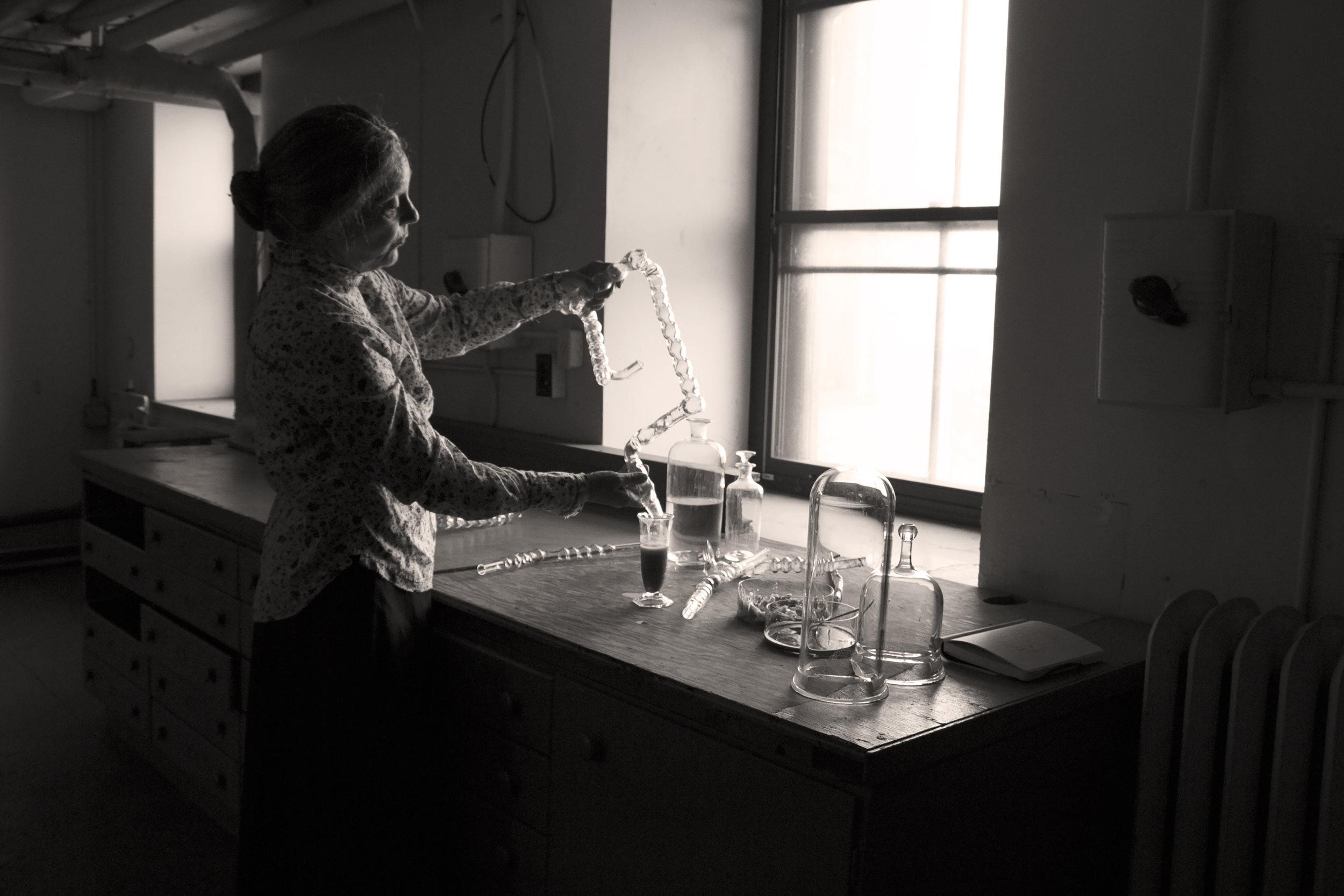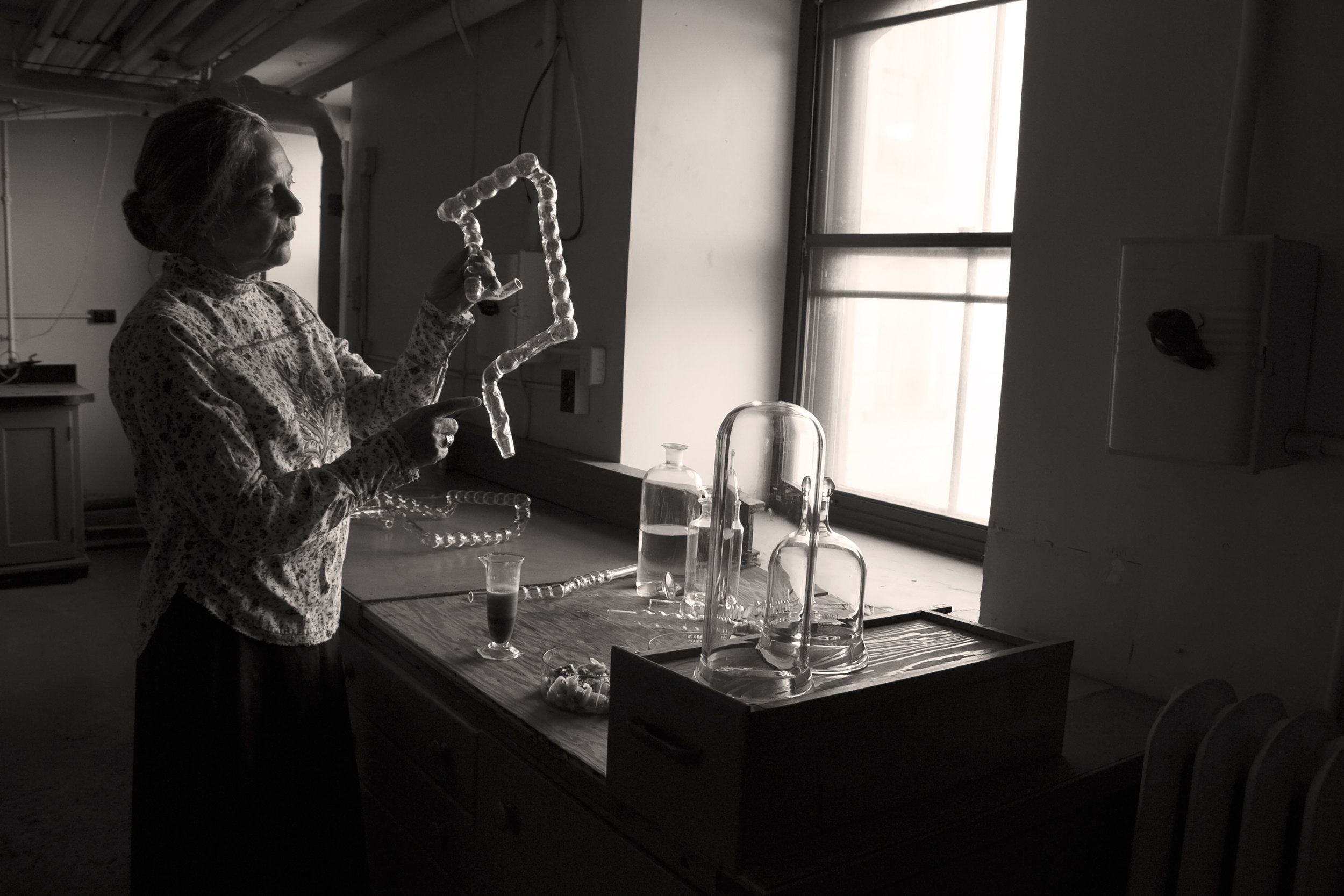History of Shit (2017)
History of Shit (2017). Installation View. Written text, photographs and historic objects. Photo: Jamie Alvarez.
Conceived by:
Kathy High, Guy Schaffer, and Oliver Kellhammer.
Glassware produced by:
Bill Jones
Photography:
Shannon K. Johnson
Production Support:
The Mütter Museum, the F.C. Wood Institute, and to the College of Physicians of Philadelphia.
The History of Shit (2017)
An homage to Dominique Laporte’s History of Shit (1978)
The History of Shit project is an homage to Dominique Laporte’s book entitled History of Shit (1978) and an ongoing collaboration with STS scholar Guy Schaffer. We are committed to re-imaging and re-inserting feminist and queer stories into our histories of medicine and science.
This collection represents research by Guy Schaffer and Kathy High investigating how we have considered our shit though antiquity. How have we contained it, discarded it, used it? How have attitudes changed from public open toilets to private bathrooms? Why do we have so much shame around our shit? Why is shit a fetish for some?
Today with the discoveries of our gut microbiome, perhaps our attitudes are changing.
Schaffer and High were awarded a research grant from the F.C. Wood Institute of the College of Physicians of Philadelphia, associated with the well-known Mütter Museum. Much of the original research was conducted in the College of Physicians library as a starting point to develop a larger and ever-growing History of Shit.
Schaffer/High discovered the writings of a [speculative] historic character, Challis Underdue, who departed from early 19th century medical beliefs and protocol. Not only was she trained as a physician, but she found that excrement had particular powers, alluding to the understanding of the importance of the gut microbiome in the body’s health and well-being. Underdue developed the “excremental vitality theory” and practiced as a true scientist in an age when women were discouraged from such studies. And finally, as a feminist and queer researcher, And the rare discovery of Underdue’s glass colon replicas which she used for fermentation experiments, illuminated her tactile understanding of the body and animated interest in bowel functions.
EXCERPT / The History of Shit / The Forgotten Scatomancer: Challis Underdue’s Excremental Vitality and the Medical Cultures of Modern Great Britain, (2017) by Guy Schaffer
3: Fermentation experiments and the
excremental vitality theory
Historians have debated the scientific origins of Underdue’s
excremental vitality theory, which many see as a precursor to what we now understand as the gut microbiome. For many years, the dominant theory held that Underdue was cleverly appropriating animacular theory (a discredited 17th-century concept of disease caused by of microscopic animals) for use as a correction to humoral theory, which framed all illness as an imbalance between the body’s humours. This theory is somewhat consistent with her writings, in which balance between the inhabitants of the intestine is the cause of either health or illness. Feminist historians of science have suggested that her interest in a living, animate intestine was inherited from her placement within the cultures of midwifery, which challenged the mechanical metaphors of medieval and modern medicine through its depiction of an irreducibly complex body that is to be lived with, rather than controlled.
The unearthing of Underdue’s diaries has encouraged a new explanation for the origins of excremental vitality, as a sort of microcosm of the complexities of human society, refracted through the “lens” of the anus. The following passage, in an entry from 1807, might describe the exact moment of origin of the concept:
Ass above, so below, it is written by Hermes Trismegistus. This wisdom of the ancients has always seemed clear to me: as I peer into the brown mirror of the chamber-pot, I wonder whose reflections I look into. The city of smoke, with all its factories and markets and fancy ladies is reproduced in mirror image in the city of shit that my father and I inhabit. And this city of shit must, I suppose, be mirrored in microcosm on the opposite side of the anal lens—each Londonite’s bowel functioning as the streets of his own body politic. How I would care to learn how these intestinal villages operate: what law can govern shit?
It is unclear if her misreading of Hermes Trismegistus is honest or merely a private joke.
!!!
—Excerpt from The Forgotten Scatomancer: Challis Underdue's Excremental Vitality and the Medical Cultures of Modern Great Britain, by Guy Schaffer as part of the exhibition The History of Shit (2017).
